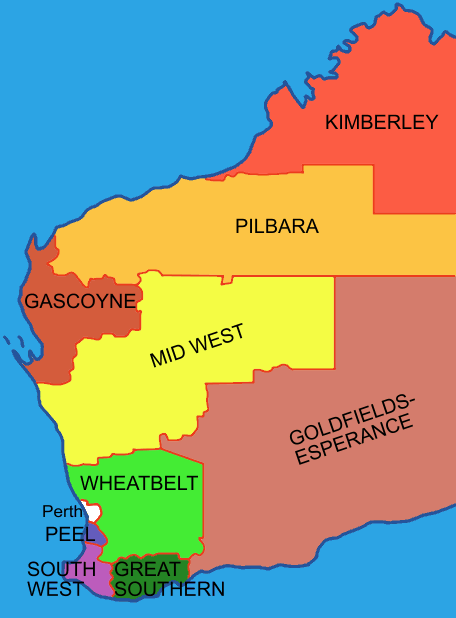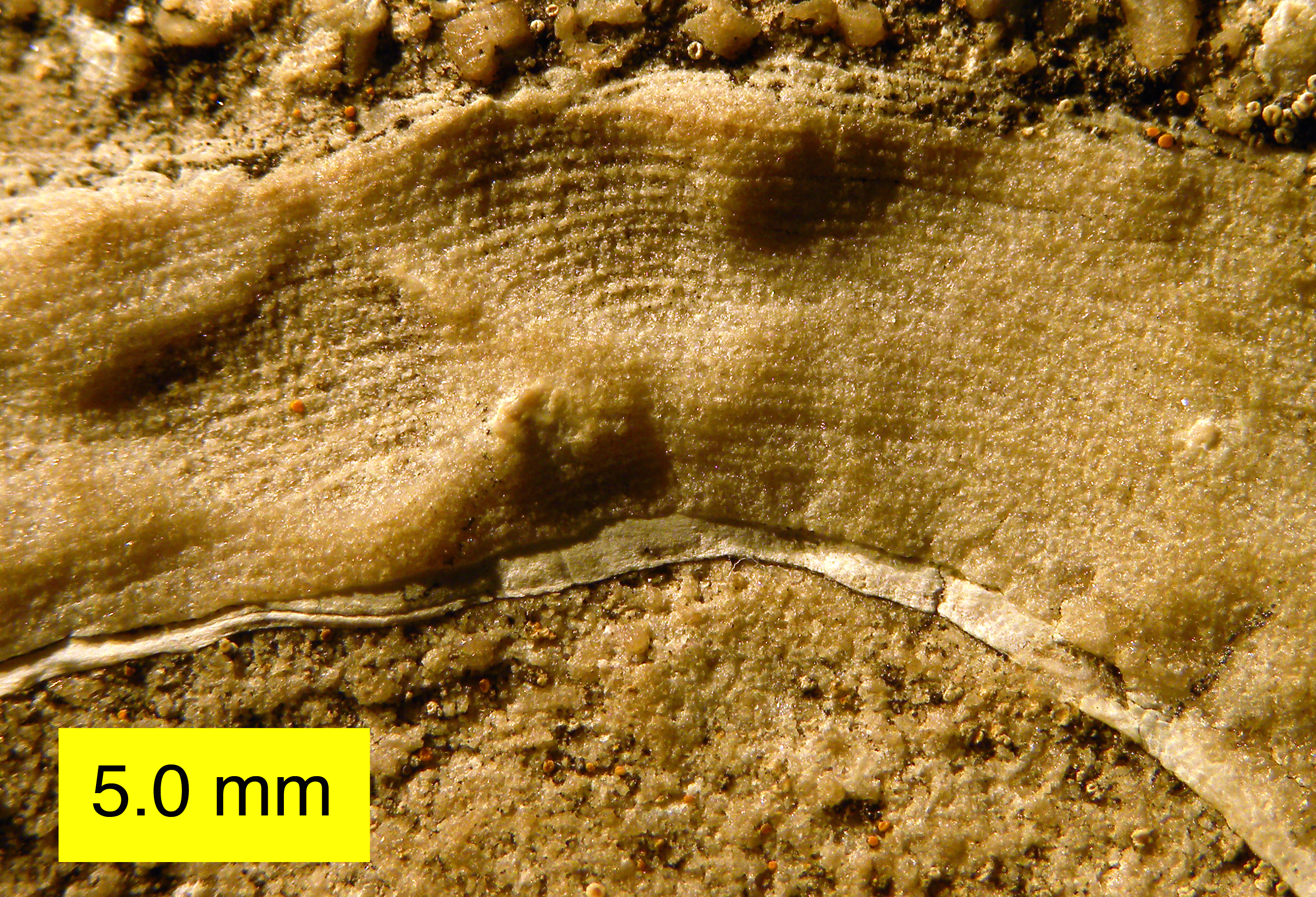|
Woodleigh Crater
Woodleigh is a large meteorite impact crater (astrobleme) in Western Australia, centred on Woodleigh Station east of Shark Bay, Gascoyne region. A team of four scientists at the Geological Survey of Western Australia and the Australian National University, led by Arthur J. Mory, announced the discovery in the 15 April 2000 issue of ''Earth and Planetary Science Letters''. Description The crater is not exposed at the surface and therefore its size is uncertain. The original discovery team stated in 2000 that it may be up to in diameter, but others argue it may be much smaller, with one 2003 study suggesting a diameter closer to . The larger estimate of 120 km, if correct, would make this crater tied for the fourth largest confirmed impact structure in the world, and imply a bolide (asteroid or comet) about in diameter.PDF [...More Info...] [...Related Items...] OR: [Wikipedia] [Google] [Baidu] |
Gascoyne
The Gascoyne region is one of the nine administrative regions of Western Australia. It is located in the northwest of Western Australia, and consists of the local government areas of Carnarvon, Exmouth, Shark Bay and Upper Gascoyne. The Gascoyne has about of Indian Ocean coastline; extends inland about ; and has an area of , Estimated resident population, 30 June 2019. including islands. Population The Gascoyne has the lowest population of any region of Western Australia, with about 9,277 people. The majority of residents are non-Aboriginal people born in Australia (74%). Just over half live in Carnarvon (4,426) where Aboriginal residents account for 18% of the population. Other centres are Exmouth, Denham, Gascoyne Junction and Coral Bay. Climate The Gascoyne has a moderate arid tropical, climate. It is generally warm all year round, with mean maximum daily temperatures ranging from in July to in January. The region receives about 320 days of sunshine per year. Ann ... [...More Info...] [...Related Items...] OR: [Wikipedia] [Google] [Baidu] |
ABC News (Australia)
ABC News, or ABC News and Current Affairs, is a public news service produced by the Australian Broadcasting Corporation. Broadcasting within Australia and the rest of the world, the service covers both local and world affairs. The division of the organisation, which is called ABC News, Analysis and Investigations. is responsible for all news-gathering and coverage across the Australian Broadcasting Corporation's various television, radio, and online platforms. Some of the services included under the auspices of the division are the ABC News TV channel (formerly ABC News 24); the long-running radio news programs, '' AM'', '' The World Today'', and '' PM''; ABC NewsRadio, a 24-hour continuous news radio channel; and radio news bulletins and programs on ABC Local Radio, ABC Radio National, ABC Classic FM, and Triple J. ABC News Online has an extensive online presence which includes many written news reports and videos available via ABC Online, an ABC News mobile app (ABC Liste ... [...More Info...] [...Related Items...] OR: [Wikipedia] [Google] [Baidu] |
Carboniferous Australia
The Carboniferous ( ) is a Period (geology), geologic period and System (stratigraphy), system of the Paleozoic that spans 60 million years from the end of the Devonian Period million years ago (Myr, Mya), to the beginning of the Permian Period, million years ago. The name ''Carboniferous'' means "coal-bearing", from the Latin ''wikt:carbo#Latin, carbō'' ("coal") and ''wikt:fero#Latin, ferō'' ("bear, carry"), and refers to the many coal beds formed globally during that time. The first of the modern 'system' names, it was coined by geologists William Conybeare (geologist), William Conybeare and William Phillips (geologist), William Phillips in 1822, based on a study of the British rock succession. The Carboniferous is often treated in North America as two geological periods, the earlier Mississippian (geology), Mississippian and the later Pennsylvanian (geology), Pennsylvanian. Terrestrial animal life was well established by the Carboniferous Period. Stegocephalia, Tetrapods ( ... [...More Info...] [...Related Items...] OR: [Wikipedia] [Google] [Baidu] |
Devonian Impact Craters
The Devonian ( ) is a geologic period and system of the Paleozoic era, spanning 60.3 million years from the end of the Silurian, million years ago (Mya), to the beginning of the Carboniferous, Mya. It is named after Devon, England, where rocks from this period were first studied. The first significant adaptive radiation of life on dry land occurred during the Devonian. Free-sporing vascular plants began to spread across dry land, forming extensive forests which covered the continents. By the middle of the Devonian, several groups of plants had evolved leaves and true roots, and by the end of the period the first seed-bearing plants appeared. The arthropod groups of myriapods, arachnids and hexapods also became well-established early in this period, after starting their expansion to land at least from the Ordovician period. Fish reached substantial diversity during this time, leading the Devonian to often be dubbed the Age of Fishes. The placoderms began dominating ... [...More Info...] [...Related Items...] OR: [Wikipedia] [Google] [Baidu] |
Carboniferous Impact Craters
The Carboniferous ( ) is a geologic period and system of the Paleozoic that spans 60 million years from the end of the Devonian Period million years ago (Mya), to the beginning of the Permian Period, million years ago. The name ''Carboniferous'' means "coal-bearing", from the Latin '' carbō'' ("coal") and '' ferō'' ("bear, carry"), and refers to the many coal beds formed globally during that time. The first of the modern 'system' names, it was coined by geologists William Conybeare and William Phillips in 1822, based on a study of the British rock succession. The Carboniferous is often treated in North America as two geological periods, the earlier Mississippian and the later Pennsylvanian. Terrestrial animal life was well established by the Carboniferous Period. Tetrapods (four limbed vertebrates), which had originated from lobe-finned fish during the preceding Devonian, became pentadactylous in and diversified during the Carboniferous, including early amphibian lineages ... [...More Info...] [...Related Items...] OR: [Wikipedia] [Google] [Baidu] |
Impact Craters Of Western Australia
Impact may refer to: * Impact (mechanics), a high force or shock (mechanics) over a short time period * Impact, Texas, a town in Taylor County, Texas, US Science and technology * Impact crater, a meteor crater caused by an impact event * Impact event, the collision of a meteoroid, asteroid or comet with Earth * Impact factor, a measure of the citations to a science or social science journal Books and magazines * ''Impact'' (novel), a 2010 novel by Douglas Preston *''Impact Press'', a former Orlando, Florida-based magazine * Impact Magazines, a former UK magazine publisher * ''Impact'' (conservative magazine), a British political magazine * ''Impact'' (British magazine), a British action film magazine * ''Impact'', a French action film magazine spun off from ''Mad Movies'' * ''Impact'' (UNESCO magazine), a former UNESCO quarterly titled ''IMPACT of science on society'' * ''Impact'' (student magazine), a student magazine for the University of Nottingham, England * ''Bathimp ... [...More Info...] [...Related Items...] OR: [Wikipedia] [Google] [Baidu] |
Carnarvon Basin
The Carnarvon Basin is a geological basin located in the north west of Western Australia which extends from the Dampier Archipelago to the Murchison bioregion, and is the main geological feature that makes up the North West Shelf. The onshore part of the Carnarvon Basin covers about 115,000 km2 and the offshore part covers approximately 535,000 km2 with water depths up to 3,500 metres. It is separated into two major areas - the Northern Carnarvon Basin, and the Southern Carnarvon Basin. Northern Carnarvon Basin The Northern Carnarvon Basin includes the Exmouth Plateau, Wombat Plateau (on the northern part of the Exmouth Plateau), Investigator Sub-basin, Rankin Platform, Exmouth Sub-basin, Barrow Sub-basin, Dampier Sub-basin, Beagle Sub-basin, Enderby Terrace, Peedamullah Shelf and the Lambert Shelf. [...More Info...] [...Related Items...] OR: [Wikipedia] [Google] [Baidu] |
Tookoonooka Crater
Tookoonooka is a large meteorite impact crater (astrobleme) situated in South West Queensland, Australia. It lies deeply buried within Mesozoic sedimentary rocks of the Eromanga Basin and is not visible at the surface. Description Tookoonooka was discovered using seismic data collected during routine petroleum exploration and first reported in a publication in 1989,Gorter J.D., Gostin V.A. & Plummer P. 1989. The Tookoonooka Structure: an enigmatic sub-surface feature in the Eromanga Basin, its impact origin and implications for petroleum exploration. In: O’Neil B.J. (editor) The Cooper and Eromanga Basins, Australia: Proceedings of the Cooper and Eromanga Basins Conference, Adelaide, 1989, pp. 441–456. Petroleum Exploration Society of Australia, Society of Petroleum Engineers, Australian Society of Exploration Geophysicists (SA Branches). with proof of the impact theory coming from the discovery of shocked quartz in drill core.Gostin V.A. & Therriault A.M. 1997. Tookoonoo ... [...More Info...] [...Related Items...] OR: [Wikipedia] [Google] [Baidu] |
Acraman Crater
Acraman crater is a deeply eroded impact crater in the Gawler Ranges of South Australia. Its location is marked by Lake Acraman, a circular ephemeral playa lake about in diameter. The discovery of the crater and independent discovery of its ejecta were first reported in the journal Science in 1986. The evidence for impact includes the presence of shatter cones and shocked quartz in shattered bedrock on islands within Lake Acraman. The crater is deeply eroded, and its original size must be inferred by indirect means. Some authors estimate an original diameter of up to , while other suggest a smaller size, perhaps only , closer to that of the depression in which Lake Acraman is centred. The larger size estimate would imply an energy release of 5.2 × 106 megatons of TNT. The impact event is estimated to have occurred about 590 million years ago during the Ediacaran; this age is not derived from the crater itself but from the position of ejecta within nearby sedimentary basins ... [...More Info...] [...Related Items...] OR: [Wikipedia] [Google] [Baidu] |
East Warburton Basin
The East Warburton Basin in South Australia is the site of a hypothesised large impact crater of the Carboniferous period (around 360-300 million years ago). The subterranean structure lies buried at a depth of ~4 km, and measures a minimum of 200 km in diameter. For comparison, the Chicxulub crater, which caused the Cretaceous–Paleogene extinction event, is about 180 km in diameter. The East Warburton crater is adjacent to the West Warburton crater, which is also around 200 km in diameter. Combined, they make up the largest known impact zone on Earth, but individually, are smaller than the largest in the world, the 300 km wide Vredefort impact structure in South Africa. The Warburton craters formed when an asteroid or comet, on a collision course with Earth, split into two main pieces and impacted the Australian continent, then part of the Gondwanan supercontinent. Scientists proposed the impact formation through analysis of shocked quartz grains from the area ... [...More Info...] [...Related Items...] OR: [Wikipedia] [Google] [Baidu] |
Late Devonian Extinction
The Late Devonian extinction consisted of several extinction events in the Late Devonian Epoch, which collectively represent one of the five largest mass extinction events in the history of life on Earth. The term primarily refers to a major extinction, the Kellwasser event (also known as the Frasnian-Famennian extinction), which occurred around 372 million years ago, at the boundary between the Frasnian stage and the Famennian stage, the last stage in the Devonian Period.Racki, 2005McGhee, George R. Jr, 1996. The Late Devonian Mass Extinction: the Frasnian/Famennian Crisis (Columbia University Press) Overall, 19% of all families and 50% of all genera became extinct. A second mass extinction, the Hangenberg event (also known as the end-Devonian extinction), occurred 359 million years ago, bringing an end to the Famennian and Devonian, as the world transitioned into the Carboniferous Period. Although it is well established that there was a massive loss of biodiversity in the Late ... [...More Info...] [...Related Items...] OR: [Wikipedia] [Google] [Baidu] |




